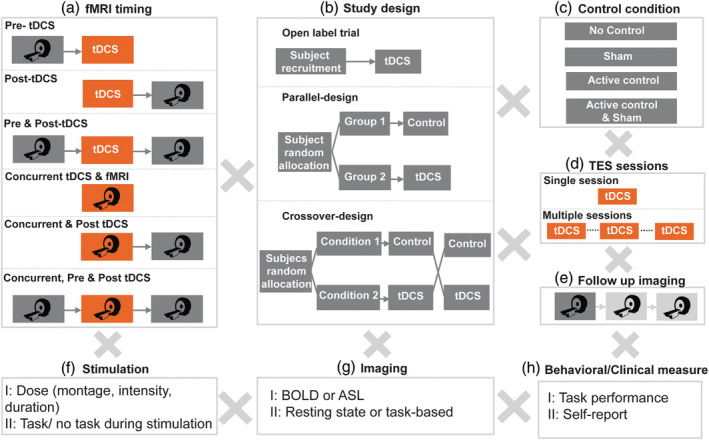Figure 2.

Permutations in trial design for integration of MRI‐based neuroimaging methods with tDCS. (a) fMRI timing can occur pre‐ and/or post‐stimulation outside scanner (sequential‐outside scanner approach), pre‐ and/or post‐stimulation inside scanner (sequential‐inside scanner approach) or concurrently during stimulation to evaluate tDCS effect on ongoing neural activities. (b) Study designs include single arm open label studies with no control condition, parallel approach where subjects are randomly assigned to either active or sham group and crossover approach, where subjects participate in both active and sham sessions with a random order. (c) Control conditions consist of sham, active control or both. (d) tDCS may be applied over multiple sessions with an expectation of cumulative (time) effect. (e) Imaging may include multiple follow up sessions to evaluate after effects longitudinally. (f) Stimulation dose (i.e., electrode montage, stimulation duration, and intensity) and combination with task will determine outcomes. (g) Essentially any functional imaging sequence can be utilized to evaluate stimulation effects depending on the study questions/hypothesis. (h) tDCS‐imaging study designs can combine a multitude of other objective or subjective assessments concurrent or combined with imaging and/or tDCS
